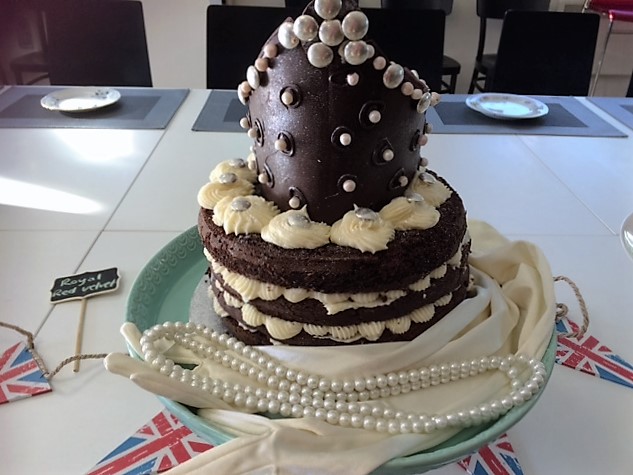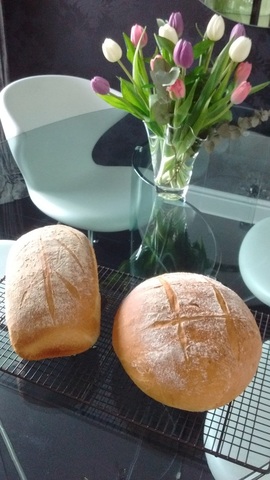| Did you know that today is National red hair day? neither did I, but now I do I have the perfect excuse to celebrate and have a slice of this Red Velvet cake. This week I popped along to Warrington Clandestine Cake Club. It was great to taste so many different cakes and talk baking all evening! Every CCC event has a theme and this one was 'fit for a Queen' in honour of Her Majesty's 90th year. This (picture) was my rather over the top entry, but then, I do like a touch of drama on a Tuesday night and I did want to practice my chocolate work. A couple of people asked for the recipe so I thought you might like it too. It's well worth making, quite dense, rich and moist. I didn't use any food colouring as I try to avoid it if I can and the beetroot gave it a slight red hue, but perhaps a little should be in Red Velvet! This recipe was taken from the Step by Step cake decorating book by Karen Sullivan. ISBN: 9781409334811 Red velvet cake You could stir in 1tsp of red colouring paste with the beetroot) This makes a large 4 tier cake, really moist and decadent. Serves around 14. 2 x 20cm cake tines, greased and lined 3-4 medium beetroots (500g in total) 300g plain flour 50g cocoa powder 2 tsp bicarbonate of soda ½ teaspoon salt 175 g unsalted butter 275g brown sugar 200g caster sugar 3 large eggs at room temperature 2tsp vanilla extract 100g dark chocolate, broken into pieces and melted 150ml buttermilk mixed with 2tsp of cider vinegar (I used normal milk and 3 tsp of lemon juice instead) Buttercream ingredients 250g unsalted butter 2tsp vanilla extract 600g icing sugar 200g cream cheese (drained) Method 1. Cook the beetroot in a pan covered with water for 30-40 minutes. Cool, then peel. 2. Melt the chocolate over a pan of simmering water. 3. Preheat the oven to 180 c 4. Whizz the beetroot in a blender to make a puree, adding a little water if necessary. 5. Sift together the flour, cocoa, bicarbonate and salt. 6. In a separate bowl, whisk the butter, sugar, eggs and vanilla, then add the cooled, melted chocolate. 7. Slowly add the flour mixture and the buttermilk mixture to the batter. 8. Stir in 250ml of the beetroot puree and continue to mix. 9. Divide the batter between the tins and bake for 35 minutes or until a skewer comes out clean. 10. Leave to cool, slice in half and layer with buttercream icing if desired. Buttercream method 1. Cream butter and vanilla together with an electric whisk, add the icing sugar beating well 2. Beat in the cream cheese |
|
1 Comment
This week, as it is real bread week, I have asked my bread baking buddy Mitch Poole to guest blog. I did actually make this loaf myself last week, so I know the recipe works and is delicious!
|
Archives
June 2024
Categories |



 RSS Feed
RSS Feed